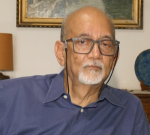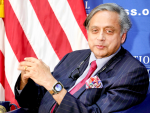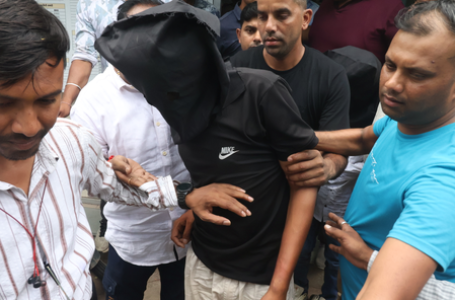
New Delhi: A month after military hostilities between India and Pakistan ceased, the Indian
government’s equivocation on whether and, indeed, if, the Donald Trump-led
US administration helped to broker that cease-fire has left the issue of what
exactly happened dangling.
In the aftermath of the ghastly terror attack on tourists in Pahalgam, India’s
clearly stated objective for launching ‘Operation Sindoor’ was to attack and
destroy terrorist bases and infrastructure inside Pakistan. A total of nine such
locations were targeted the first day and considerable damage inflicted on
buildings and personnel therein who, clearly, had the support of the Pakistani
state, which has formalised the use of terror as an instrument of its foreign
policy, particularly against India.
Unfortunately for India, the narrative which played out, especially across the
western world, was of a belligerent India attacking civilian targets inside
Pakistan. India also lost some of its strike aircraft in Pakistan’s counter-attack,
as hostilities escalated to a ‘near war-like situation’ between the nuclear-armed
neighbours.
As the theatre of the fireworks in the night skies shifted from news studios into
homes, the Indian government, realising the critical nature of the perception of
events, decided to mount detailed official-military briefings, with the sober
Foreign Secretary Vikram Misri leading the official briefing and two lady
officers, from the Army and the Air Force, providing details of the military
operations undertaken.
This injection of realism into the theatre of speculation helped to restore some
credibility in the proceedings, despite the bypassing of questions. When the US
President, on his social media feed, dramatically announced that military
engagement would cease, to allow for dialogue, the Indian government
announced that there would be a cessation of hostilities, but would not confirm
the role of the United States in bringing an end to the violence.
Whether India achieved what it set out to do, in terms of eliminating the threat
from groups of state – sponsored terrorists in Pakistan, is unlikely. The message
it sent out, that terrorist attacks on its citizens would be countered militarily, has
however, removed the focus from the terrorist acts and brought back
equivalence in the India-Pakistan relationship.
The Indian government’s prevarication around circumstances in which it agreed
to the cease-fire, and the losses it incurred in the hostilities, has seen questions
raised at international forums and a re-hyphenation of the India-Pakistan
equation.
Having tried, and succeeded, since the 26/11/2008 outrage by Pakistan in
Mumbai, to de-hyphenate the bilateral relationship, Operation Sindoor has
revived the India – Pakistan equation, on par, despite the vast economic and
developmental differences between the two countries.
Having taken on India militarily, Pakistan found itself back as the cynosure of
global attention. Islamabad received its due tranche of IMF aid and elevated its
Army chief, Asif Munir, widely seen in India as the perpetrator of the Pahalgam
outrage and coordinator of Pakistan’s military response, to the rank of Field
Marshall.
Forced onto the back foot and finding itself rather isolated globally, India opted
to send its parliamentarians to 33 countries to explain that it, and not Pakistan,
was the victim. However, given the level and nature of the interlocutors they
encountered and the fact that Pakistan, in its position as a non-permanent
member of the United Nations Security Council (UNSC), has assumed charge
of a key anti-terrorism committee at the UN while co-chairing another, India’s
outreach does not appear to have been successful.
Within India, a special session of parliament was not convened in India to lay
out the details provided to foreign interlocutors for the domestic audience. In
fact, there has been a domestic pushback too, with many people questioning
why the government accepted the cease-fire, when it was ahead militarily.
Similarly, it was at a forum abroad that India’s chief of defence staff (CDS),
Gen. Anil Chauhan, disclosed that India had indeed suffered reverses and lost
aircraft on the first day of the operation. He also said the Indian armed forces
“remedied” and “rectified” their strategy thereafter and emerged on top after
causing substantial damage to Pakistan’s military assets.
In sum, in terms of perception, certainly, Operation Sindoor did not quite
achieve what it set out to do. India is seen to have moved from being a credible
counter to China to returning to a form of equivalence or a re-hyphenation with
Pakistan.
Responding to terrorist attacks in India with retaliatory military attacks on
targets within Pakistan has assumed a predictability that allowed Islamabad to
prepare accordingly and put up a substantial fight back.
The absence of any forms of engagement with Pakistan other than military has
narrowed India’s options substantially. As a sovereign state, Pakistan cannot be
seen to nor will it bow to any coercive tactics. The current Indian
establishment’s perennially punitive approach to Pakistan and efforts to
humiliate it making it an object of domestic ridicule has not really brought any
dividends.
What Operation Sindoor has done is to clearly show up the need for re-
calibration of its Pakistan strategy if New Delhi wants to regain a semblance of
the global authority it aims to wield.
( The writer is a Delhi-based senior journalist.The views expressed in this article are the writer’s own)



 by Nilova Roy Chaudhury
by Nilova Roy Chaudhury
















